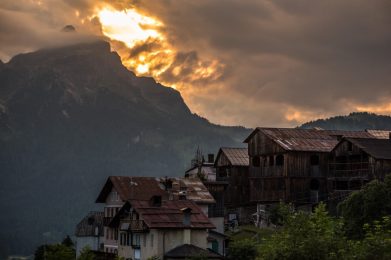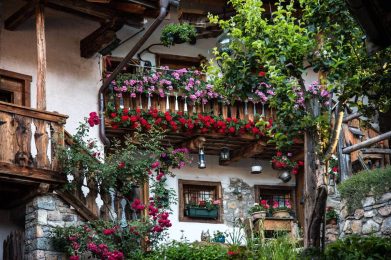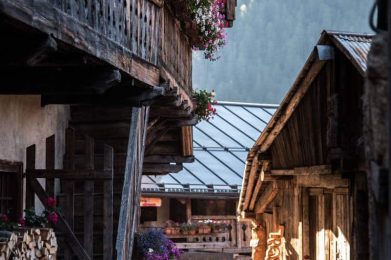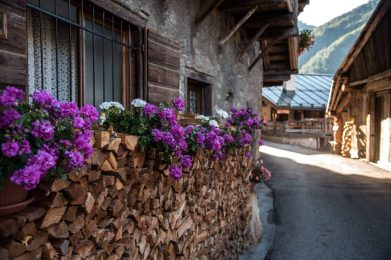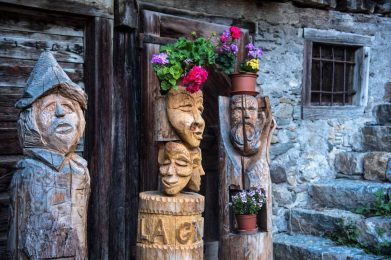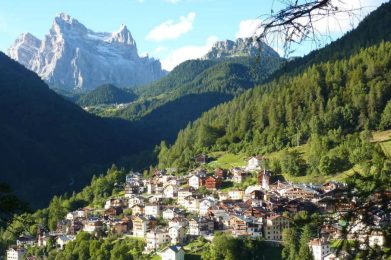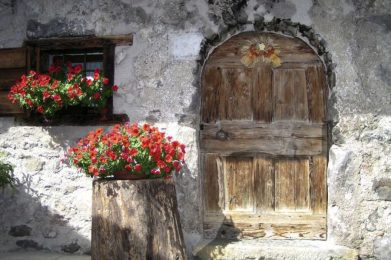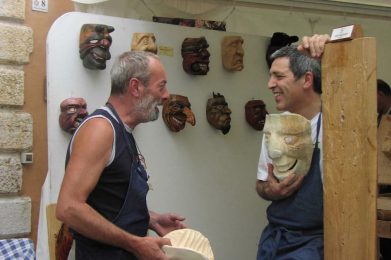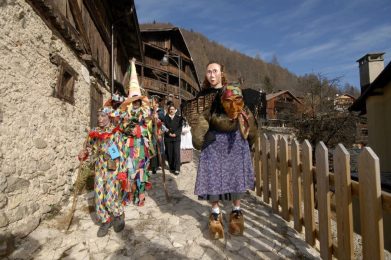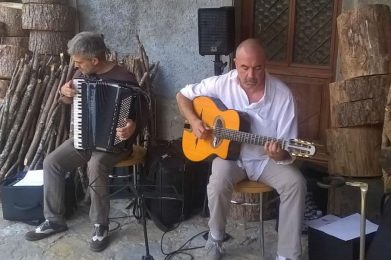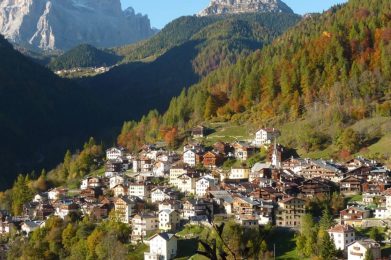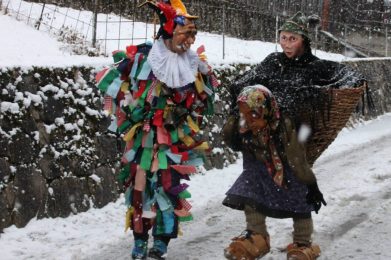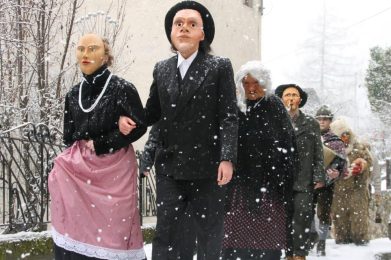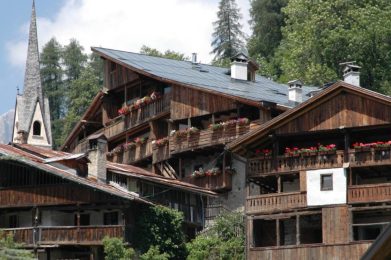Fornesighe is a small jewel set in the heart of the Belluno Dolomites, at 1010 meters above sea level, along Provincial Road 347 leading to the Cibiana Pass. This hamlet in the municipality of Val di Zoldo is among the oldest settlements in the valley and is a rare example of a mountain village that has proudly preserved its architectural and cultural identity.
Immagini del borgo
Nestled on a sunny south-facing slope, Fornesighe enjoys enchanting views of the Tamer-San Sebastiano mountain range and the Spiz di Mezzodì, spectacular northern offshoots of the Belluno Dolomites National Park. Strolling through its cobbled streets and quiet alleys is like taking a plunge into the past: a maze of wooden and stone houses, larch balconies (“solèr”), outdoor ladders and perfectly preserved tabià bear witness to a peasant and alpine culture that has remained intact over the centuries.
The very name of the village recalls its industrial past: “Fornesighe” derives from “ovens” and “fusine,” tools for processing metals extracted from the mines of the nearby Val Inferna. A historical legacy that is harmoniously intertwined with rural life, visible in the details of the dwellings and local traditions.
Architecture and memory
Fornesighe holds buildings of considerable historical and artistic value. These include the “dei Beretin” workshop decorated with a fresco by Bruno De Pellegrin, and the historic houses Arnoldo “Camelin,” Costantin “Duodi,” De Pellegrin “Geli,” Mosena, Ros “Thoòt,” and Costantin “Ofiziai,” along with the Toldo-De Pellegrin tabià. Each house tells a story, each carved wood is a fragment of memory passed down through time.
The church and the former dairy
The spiritual centerpiece of the village is the Church of San Vito, documented as early as 1570 but of even older origin. The present structure, remodeled and enlarged in the 18th century, houses the high altar made by Giovanni Paolo Gamba Zampol around 1761. Opposite the church is the former social dairy, now home to the cultural association Al Piodech Zoldan. The building, frescoed on the outside by Vico Calabrò, is now a small ethnographic museum collecting milk processing tools, wood carvings and a valuable collection of traditional masks.
Living traditions: “La Gnaga” and the piodech
In Fornesighe, traditions are still an integral part of the social fabric. Among the most heartfelt is the Carnival of “La Gnaga”, with hand-carved wooden masks and typical dishes. Every first weekend in February, the village is transformed into a lively stage of mountain rituals, folklore and irony, culminating in the Wooden Faces Review of Mountain Carnivals.
Also very significant is the tradition of piodech, from the Latin publicum plovegum, meaning work performed for the community. This collective practice, widespread until the mid-twentieth century, became relevant again in difficult times such as the 1966 flood, and today represents a strong bond of solidarity among the inhabitants.
The township of La Veda
Not far from the town, reached by a short walk through the greenery, is La Veda: an ancient summer hamlet once used for transhumance. Although today it is no longer inhabited, it retains its archaic charm, a witness to a mountain life deeply rooted in nature and seasonal rhythms.
Fornesighe is an authentic village, where every corner tells a story and where traditions, art and collective memory coexist in harmony with the landscape. It is an ideal destination for those who want to discover the truest soul of the Belluno Dolomites, among culture, nature and a welcome that tastes like home.
Village of Fornesighe
Municipality of Val di Zoldo
Province of Belluno
Region Veneto
Inhabitants: 3.185 zoldani
Altitude center: 1177 m a.s.l.
Unesco site: The Dolomites
The Municipality is part of:
City and world heritage sites Unesco
Protected Natural Areas:
Parco Nazionale Dolomiti Bellunesi
Municipality
Piazza Giovanni Angelini 1, località Zoldo Alto – Tel. 0437-789177
BY CAR
- From the south: Take the A27 highway. Leaving Pian de Vedoia, proceed towards Cortina, up to the height of Longarone. Go up the state road 251 of the Val di Zoldo and Val Cellina, reaching the Val di Zoldo.
- From the east: reach Passo Cibiana, which connects Cadore with the Zoldo territory. Along the Cibiana Pass, from Val di Zoldo Cortina it can be reached in about an hour by road.
- From the west: the Val di Zoldo is connected with the territories of Agordo and the Agordina Valley through the Duran Pass.
- From the north: access to the Val di Zoldo takes place via the Passo Staulanza, which unites the territories of the Zoldano with those of Alleghe, Selva di Cadore, Colle Santa Lucia and others of the Upper Agordino.
ON THE TRAIN
- Longarone – Zoldo railway station
BY PLANE
- Treviso Antonio Canova Airport
- Venice Marco Polo airport
- Christmas period – Fornesighe Night. The particular arrangement of the houses of Fornesighe has given birth to the idea to local inhabitants to realize a choral lighting of the country. The roofs of the houses are illuminated by thousands of lights, identical for both color and in size. The lights provide a design that perfectly blends with the environment that surrounds the village.

